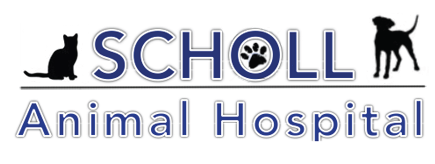WHAT IS PYODERMA?
Pyoderma is a bacterial infection of the skin and is usually caused by a bacterium called Staphylococcus pseudintermedius. The bacterium is normally present in most dogs but typically doesn’t cause disease in healthy skin. When the immune system and normal barrier function are compromised due to an underlying condition, the skin becomes susceptible to infection. Common underlying causes of pyoderma include allergic diseases (food allergy, atopy, flea allergy), parasites (mange), and hormonal imbalances.
It is important to diagnose and begin treatment of the underlying problem in order to help prevent recurrence. Treatment of the pyoderma may involve oral antibiotics and/or antibacterial ointments, shampoos, sprays, or mousses.
KEY POINTS IN TREATING PYODERMA:
Do not stop your pet’s antibiotics before they are finished without consulting your pet’s
veterinarian—no matter how good the skin looks—because this may lead to antibacterial
resistance.
Topical treatment, such as a strict bathing regimen or application of leave-in products such
as spray or mousse, is essential to resolving current infections and preventing future ones,
especially in cases of antibiotic resistance.
A recheck examination (usually after 3–4 weeks of treatment) is necessary to evaluate
your pet’s skin.
The diagnosis and management of the primary problem is the key to preventing
recurrences of a skin infection.
BATHING TIPS: Remember that bathing is a therapeutic tool, not just a grooming tool.
Saturate the pet’s coat and skin with water. Begin in affected areas, then move to
remainder of body.
Apply the shampoo to the palms and then spread onto the pet.
Do not apply the shampoo directly to the pet in a stripe down the back.
Work the shampoo into the coat and ensure it contacts the skin.
Do not scrub against the growth pattern of the coat; this can worsen infection.
Allow 10 minutes of contact time with the skin (not just the coat).
Pets can be fed or taken on walks during this time.
Rinse extremely well with tepid water. Begin with unaffected areas,
then move to areas with lesions.
Towel from head to tail, top to bottom with gentle pressure or with a hair dryer
on a cool setting.
It is very important to keep your pet’s recheck appointment. The oral medications and topical treatments may need to be modified based on your pet’s progress.
Topical treatment, such as a strict bathing regimen or application of leave-in products such as spray or mousse, is essential
to resolving current infections and preventing future ones, especially in cases of antibiotic resistance.
